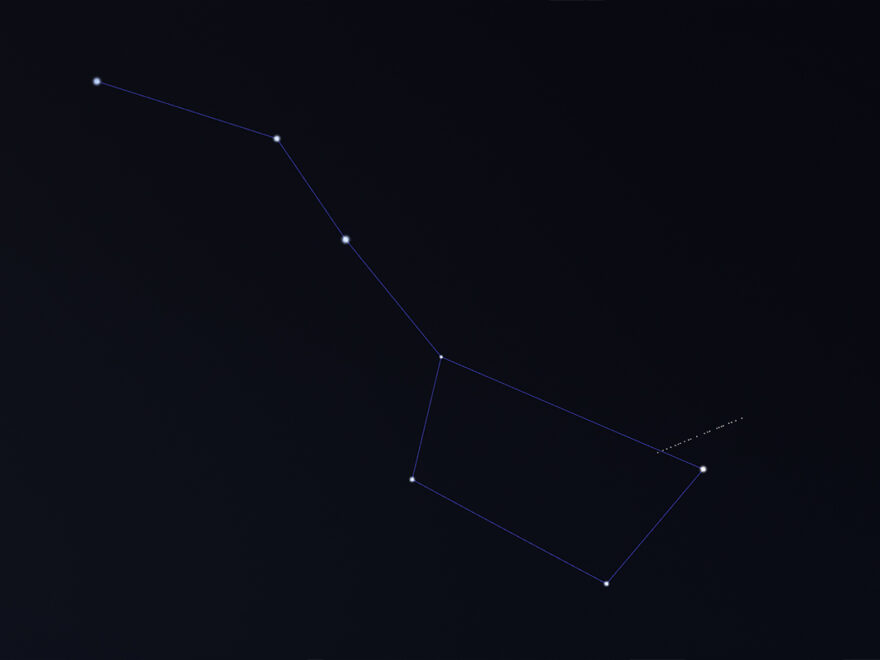On 29 September at 22:00 EDT, SpaceX launched the G6-19 Starlink mission which placed twenty-two V2 mini Starlink satellites into orbit. Last night (30 September) the resulting satellite train from that launch passed low to the north just 21.5 hours after deployment.
All videos below are timelapsed
The predicted path was through the bowl of the Big Dipper and into eclipse below Cassiopeia. These easily identifiable asterisms presented a nice target to try and catch the satellite train with my DJI Air 3 drone, something I had never attempted before.
expand to full screen for best visibility
My capture attempt was from the bortle 5 skies of Valley, AL and during the pass I could not see the satellite train visually or with the drone. However, with an increase in exposure during post-editing, you can faintly see the predicted mag 3.8 satellite train passing above the star Dubhe which is the top-right star in the bowl of the Big Dipper. The panning you see was pure luck, I knew approximately where it would be at certain times and I just happened to pan at the right time.
The simulation above shows tonight’s pass (1 October) which is predicted to be mag 2.7, that is about 2.5 times brighter than last night. It will disappear into eclipse above Cassiopeia. Since the satellite train passes through or very near the star Alioth (the star in the handle of the Big Dipper next to the bowl and also the brightest star in the constellation) it should be very easy to visually acquire and follow across the sky.
This simulation shows tomorrow night’s pass (2 October) which will be the best at a predicted mag 2.1. It will disappear into eclipse nearly straight overhead.
Notice as the night’s progress the satellite train is spreading futher apart. After tomorrow tonight, in part due to orbital precession and the SpaceX brightness mitigation applications, it will no longer be visible.

